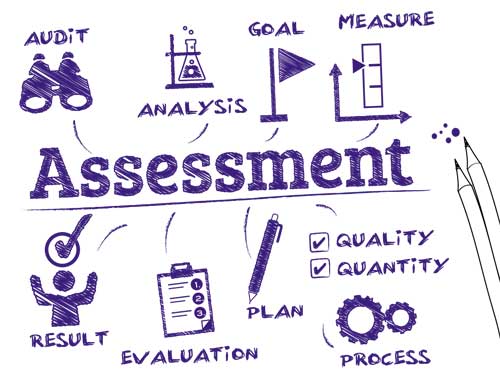GENERIC EMPLOYABILITY: IS IT TIME WE GET CRITICAL?
Is there a need to change approach to assess employability? While private and government initiatives are pumping in enormous resources all over, it seems not much focus is channeled into scientifically monitoring the effectiveness of such initiatives. Strong validity of assessments ensure that any candidate post her education and skilling program is deployed successfully in the recruitment cycle as a billable resource from day one.
Going beyond plain vanilla mass evaluation which broadly deals with candidates’ verbal reasoning and aptitude, assessment tests should be instrumental in gauging the real possible employability of a candidate. More than a hygiene check for a perceived world that more hinges on the corners of L&D department, let there be more emphasis on the real, hard problems of the big, complex corporate imperatives. In an ideal scenario, an evaluation test, broadly comprises of several modules and assesses multiple skills including English language proficiency, people and social skills, aptitude and learnability, numerical and creative skills, managerial and self-managerial competencies, logical and domain knowledge across industries such as IT & IT-enabled services, pharma, banking, financial services, insurance, retail, hospitality etc. Logistically the test should be light enough to run on low configuration and can be taken with or without broadband across multiple locations (corporate centers, schools, colleges etc.)
To create a tailor-made evaluation, it’s critical to assess candidates’ employability quotient as per her industry and functional role. The company would validate the test by getting critical industry inputs coupled with set of existing employees’ job performance data and correlate both the results for evaluation. To create an impactful evaluation for employability, it is critical to use real workplace performance as input tool for greater alignment of promise and performance. Corporate recruitment team also would like to identify the gaps in candidate’s capabilities and predict additional skillsets that can be attained if required.
THERE’S MORE TO SWEEPING LOW EMPLOYABILITY DATA
A study says that only 7% engineering graduates are employable. Another one states that only 3% engineers have suitable skills for software or product market. Such large scale low employability data raises concern on methodologies of conducting surveys. While mostly candidates are assessed on verbal reasoning and aptitude, these two factors do not guarantee the real employability of a candidate. Such basic value judgement do not serve much purpose because the student once on-boarded may work on a platform she was never assessed before.
To make the entire process more inclusive and to bring more returns from the exercise, corporates may objectively measure candidate skills related to her possible future processes. HR managers identify areas where their organizations intend to augment their competences the most is a critical step in any change effort. A skill bank development is helpful particularly in times of cost-cutting—where limited training resources must be used to close the critical competency gaps that prevent companies from meeting business objectives.
BENEFITS OF INDUSTRY ORIENTED ASSESSMENTS
Industry oriented, competency based tests have many benefits that goes beyond the run of the mill aptitude and verbal juggernaut. Though organizations have to keep their resources in pipeline for probable incoming projects, often, they have to instantly onboard large number of candidates with specific skill sets for a project that lands without notice. Competency based evaluations come handy in situations when organizations have to identify set of competency standards for specific roles. A fresher, to be assessed as competent, must demonstrate the ability to perform in relation to specific performance standards.
This saves organizations time and money on learning and development. An HR manager knows how difficult it is to immediately source an industry ready, billable fresher from day one. On average, organizations earmark three months to one year for learning and development for new employees’ incubation. By mapping skill gap and competency based tests with traditional psychometric, aptitude and verbal (or probably without them on case basis), organizations can entirely bid adieu to such programs for certain processes.
It not only makes organizations agile and ready but also help team earn that elusive competitive edge in the marketplace.
BUILDING AN ECOSYSTEM
Also, such competency and skill based tests help build an ecosystem where candidates proactively start practicing more on skills that they would love to learn to enhance their employability index.
From C++ to Java, from network to security, such tests not only make senior students go extra mile to learn to implement academic knowledge in industry practice but also create a positive ripple effect in student community. It creates an environment where a junior student would follow her senior’s footsteps. She would think beyond, “will this be in the final exam.” That’s how holistically organizations can have an eligible employable reserve bench. A set of industry ready bright youngsters, who can’t wait to take on the professional world.
This would work wonders for organizations, specially product companies, who hire selectively on a needle in a haystack model. They won’t have to face nightmarish logistical burden anymore, visit innumerable colleges across Indian states and cherry pick one or two candidates. It is time, we embrace comprehensive, competency and skill based evaluations for all-round, better bottom-line impact.


[…] Assessments: Why Industry Skills Beat Verbal & Aptitude? – Krishblog. (online) Available at: http://www.krishblog.com/validity-of-assessments-why-industry-skills-beat-verbal-aptitude/ [Accessed 28 Mar. […]
[…] http://www.krishblog.com/validity-of-assessments-why-industry-skills-beat-verbal-aptitude/ […]